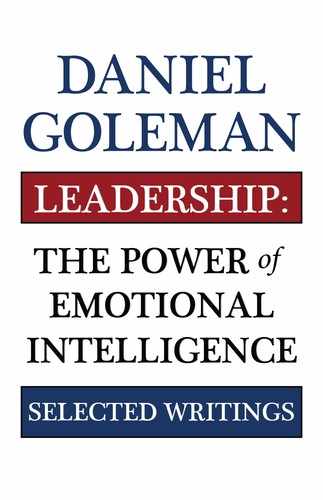THE DEMOCRATIC STYLE
Sister Mary ran a Catholic school system in a large metropolitan area. One of the schools – the only private school in an impoverished neighborhood – had been losing money for years, and the archdiocese could no longer afford to keep it open. When Sister Mary eventually got the order to shut it down, she didn’t just lock the doors.
She called a meeting of all the teachers and staff at the school and explained to them the details of the financial crisis – the first time anyone working at the school had been included in the business side of the institution. She asked for their ideas on ways to keep the school open and on how to handle the closing, should it come to that. Sister Mary spent much of her time at the meeting just listening. She did the same at later meetings for school parents and for the community and during a successive series of meetings for the school’s teachers and staff. After two months of meetings, the consensus was clear: the school would have to close. A plan was made to transfer students to other schools in the Catholic system. The final outcome was no different than if Sister Mary had gone ahead and closed the school the day she was told to. But by allowing the school’s constituents to reach that decision collectively, Sister Mary received none of the backlash that would have accompanied such a move. People mourned the loss of the school, but they understood its inevitability. Virtually no one objected.
Compare that with the experiences of a priest in our research who headed another Catholic school. He, too, was told to shut it down. And he did – by fiat. The result was disastrous: parents filed lawsuits, teachers and parents picketed, and local newspapers ran editorials attacking his decision. It took a year to resolve the disputes before he could finally go ahead and close the school.
Sister Mary exemplifies the democratic style in action – and its benefits. By spending time getting people’s ideas and buy-in, a leader builds trust, respect, and commitment. By letting workers themselves have a say in decisions that affect their goals and how they do their work, the democratic leader drives up flexibility and responsibility. And by listening to employees’ concerns, the democratic leader learns what to do to keep morale high. Finally, because they have a say in setting their goals and the standards for evaluating success, people operating in a democratic system tend to be very realistic about what can and cannot be accomplished.
However, the democratic style has its drawbacks, which is why its impact on climate is not as high as some of the other styles. One of its more exasperating consequences can be endless meetings where ideas are mulled over, consensus remains elusive, and the only visible result is scheduling more meetings. Some democratic leaders use the style to put off making crucial decisions, hoping that enough thrashing things out will eventually yield a blinding insight. In reality, their people end up feeling confused and leaderless. Such an approach can even escalate conflicts.
When does the style work best? This approach is ideal when a leader is himself uncertain about the best direction to take and needs ideas and guidance from able employees. And even if a leader has a strong vision, the democratic style works well to generate fresh ideas for executing that vision. The democratic style, of course, makes much less sense when employees are not competent or informed enough to offer sound advice. And it almost goes without saying that building consensus is wrongheaded in times of crisis.
Take the case of a CEO whose computer company was severely threatened by changes in the market. He always sought consensus about what to do. As competitors stole customers and customers’ needs changed, he kept appointing committees to consider the situation. When the market made a sudden shift because of a new technology, the CEO froze in his tracks.
The board replaced him before he could appoint yet another task force to consider the situation. The new CEO, while occasionally democratic and affiliative, relied heavily on the authoritative style, especially in his first months.
